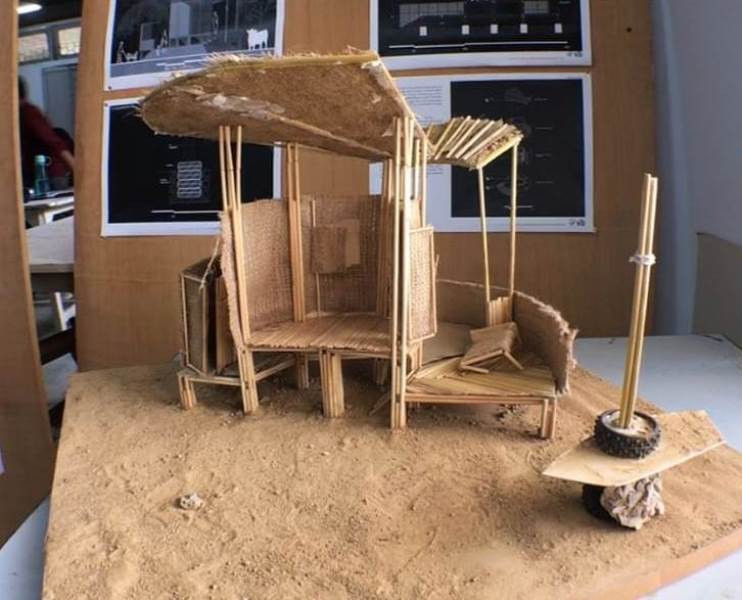
The recent devastating floods have damaged and destroyed hundreds of thousands of houses across Pakistan, leaving millions of people shelter-less. This happens after every few years and might start happening more frequently in future due to climate change.
A group of Karachi University students have come up with a solution: low-cost, sustainable and movable houses. According to them, these innovative and affordable houses could prevent the displacement of people in the event of floods in future.

The architecture students from KU’s Department of Visual Studies prepared a model of this lightweight, extremely low-budget house which is made up of bamboo, reed, reusable plastic, and used tyres. One house would cost between Rs50,000 and Rs100,000.
Also read: ADB announces ‘significant’ flood relief package
According to the designers, the most innovative feature of this house is that it could float and could easily be moved to another place along with all household items and belongings, if there is a fear of rain-induced floods in the area.

Villages, towns and cities were submerged in up to 10 feet of water during the recent floods. The outer walls of this floating house could be as high as 15 feet to prevent water from seeping inside. Building experts are thrilled by this floating house idea which they said was feasible.
Also read: Flood victims hit by disease outbreak amid stagnant water
The structure is mainly made up of bamboo and its walls are different frames joined together which is adjustable in accordance with the preferences of a family. In the event of flooding, the walls can easily be removed from the foundation and roof, turning into a floating raft.

The materials used in building this innovative house are not alien to the rural communities, while the construction techniques are so simple that villagers could put together these houses by themselves.
Huzaifa, one of the designers of this affordable house, said that they decided to work on their model after seeing the devastation caused by the recent floods, especially the displacement of millions of people.
Also read: Pakistan gets another debt relief of $160m from Japan
“The temporary tents provided to these people are not safe, while the poor sanitation is also causing outbreak of water-borne diseases,” he said. “Above all, the use of reusable plastic and old tyres will also help minimize environmental pollution,” he added.

Wajiha Siddiqui, a lecturer at the Department of Visual Studies, said that Pakistan is facing the worst effects of global warming and it should brace up for more adverse climatic events in the next 30-50 years. “We, as architects of the future, have to find ways to give back their shelter to the displaced people. This was the whole idea behind this project,” he told The Express Tribune.
Siddiqui further said that they had organised a workshop for students in which they were sensitized about the humanitarian catastrophe in the flood-hit regions.
“We are happy with the response of local NGOs who have immensely appreciated this innovative effort,” he said, adding that their objective is to help the displaced people rehabilitate quickly and to prevent future displacements in the flood-prone regions.











1736070587-0/Express-Tribune-(2)1736070587-0-270x192.webp)
1737452260-0/Gaddafi-stadium-(2)1737452260-0-270x192.webp)
1737531830-0/Saim-Ayub-injury-(2)1737531830-0-270x192.webp)









COMMENTS (3)
Comments are moderated and generally will be posted if they are on-topic and not abusive.
For more information, please see our Comments FAQ